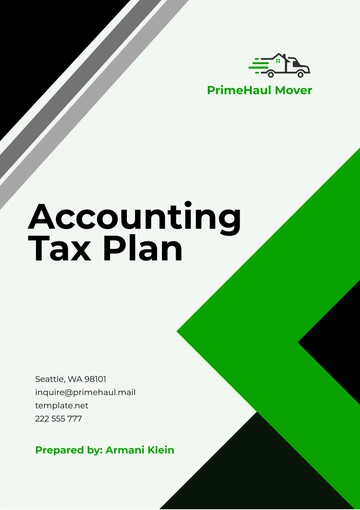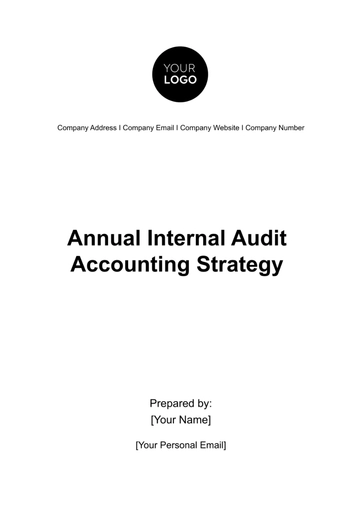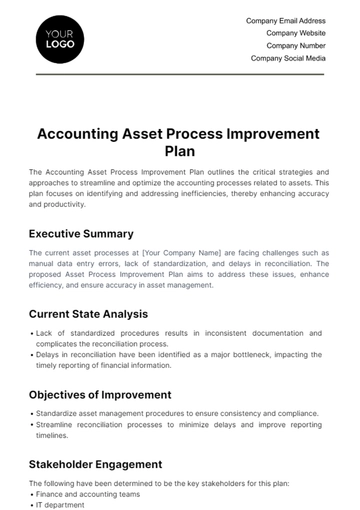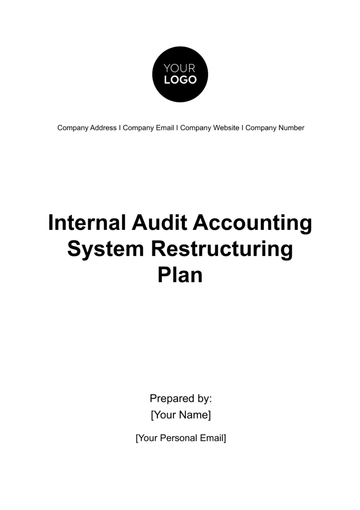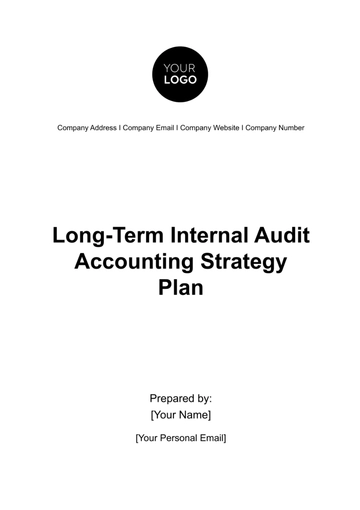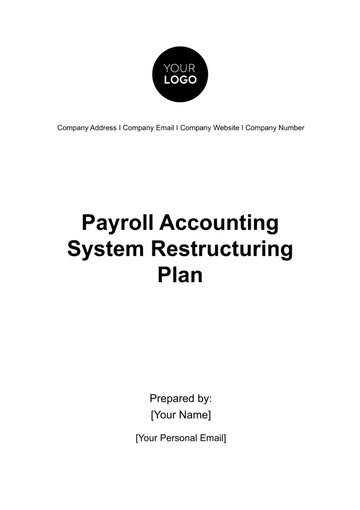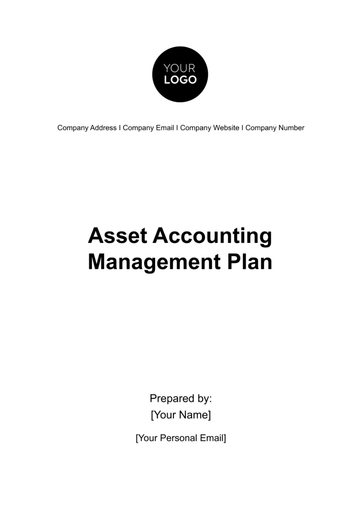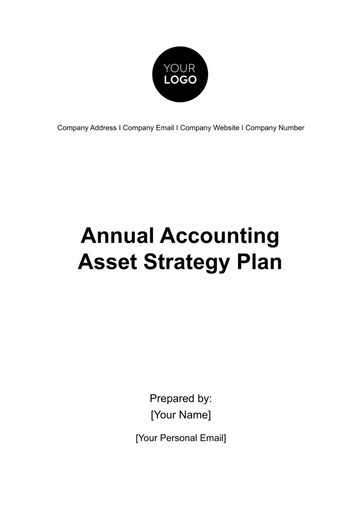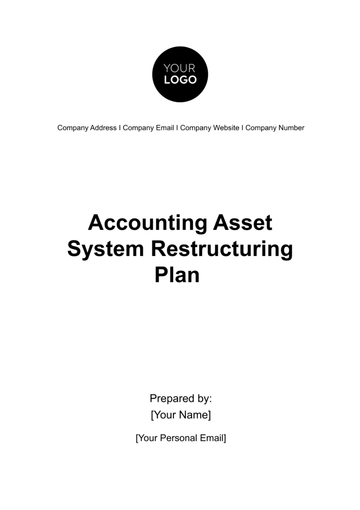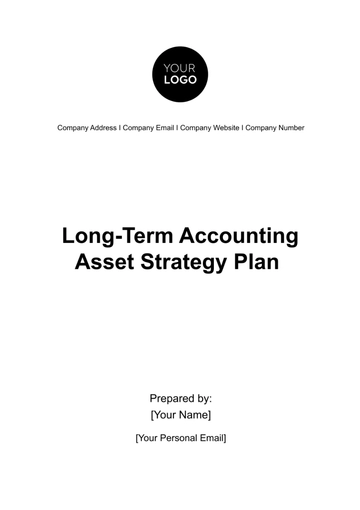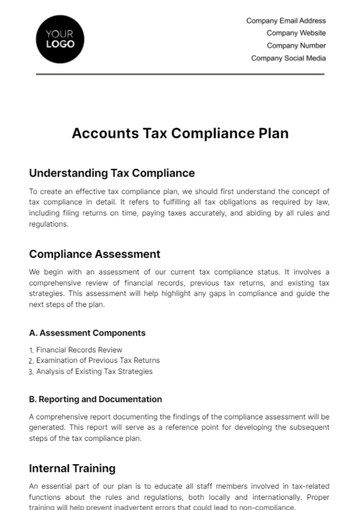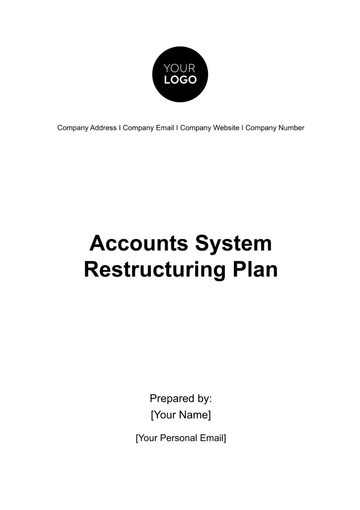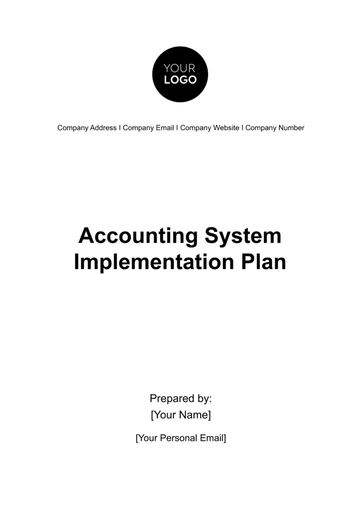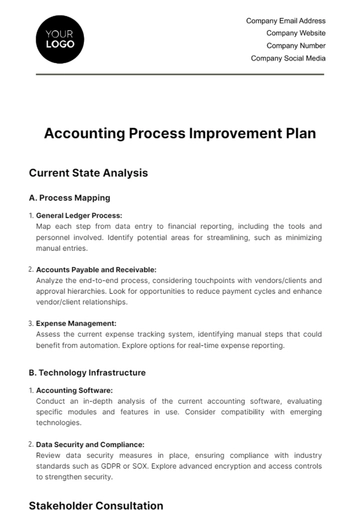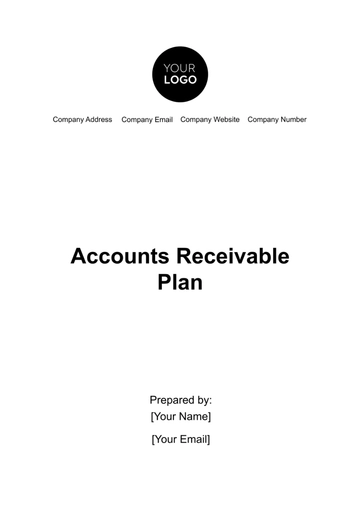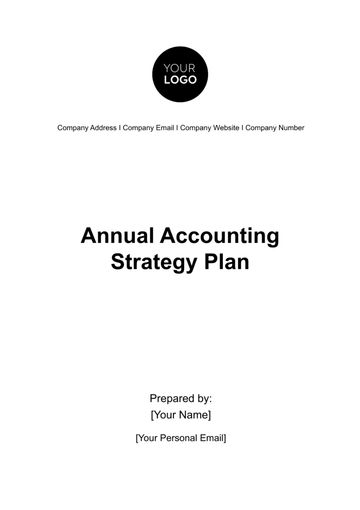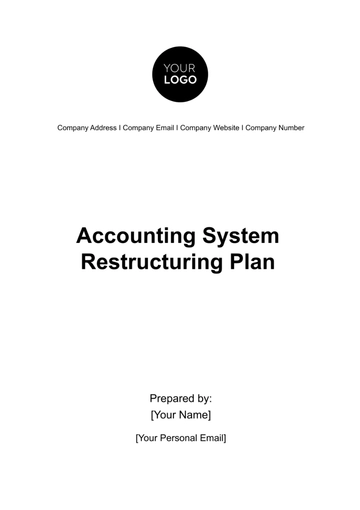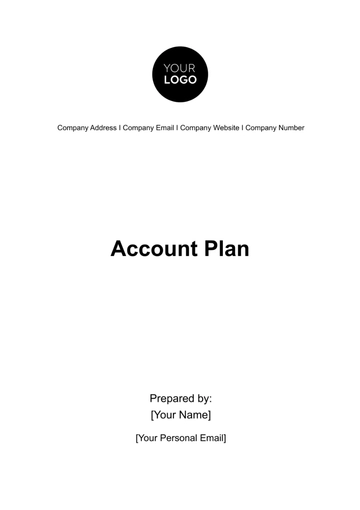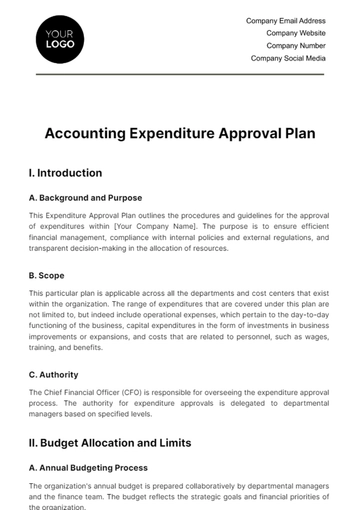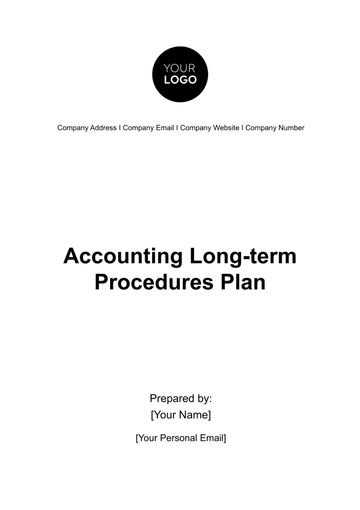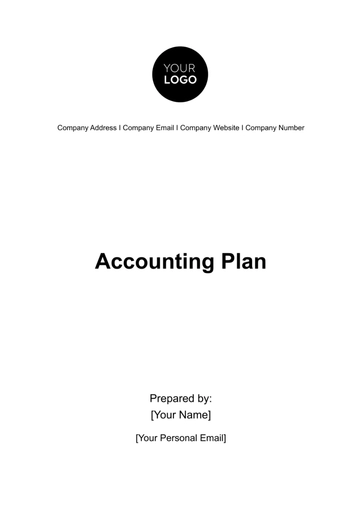Free Strategic Payroll Accounting Plan
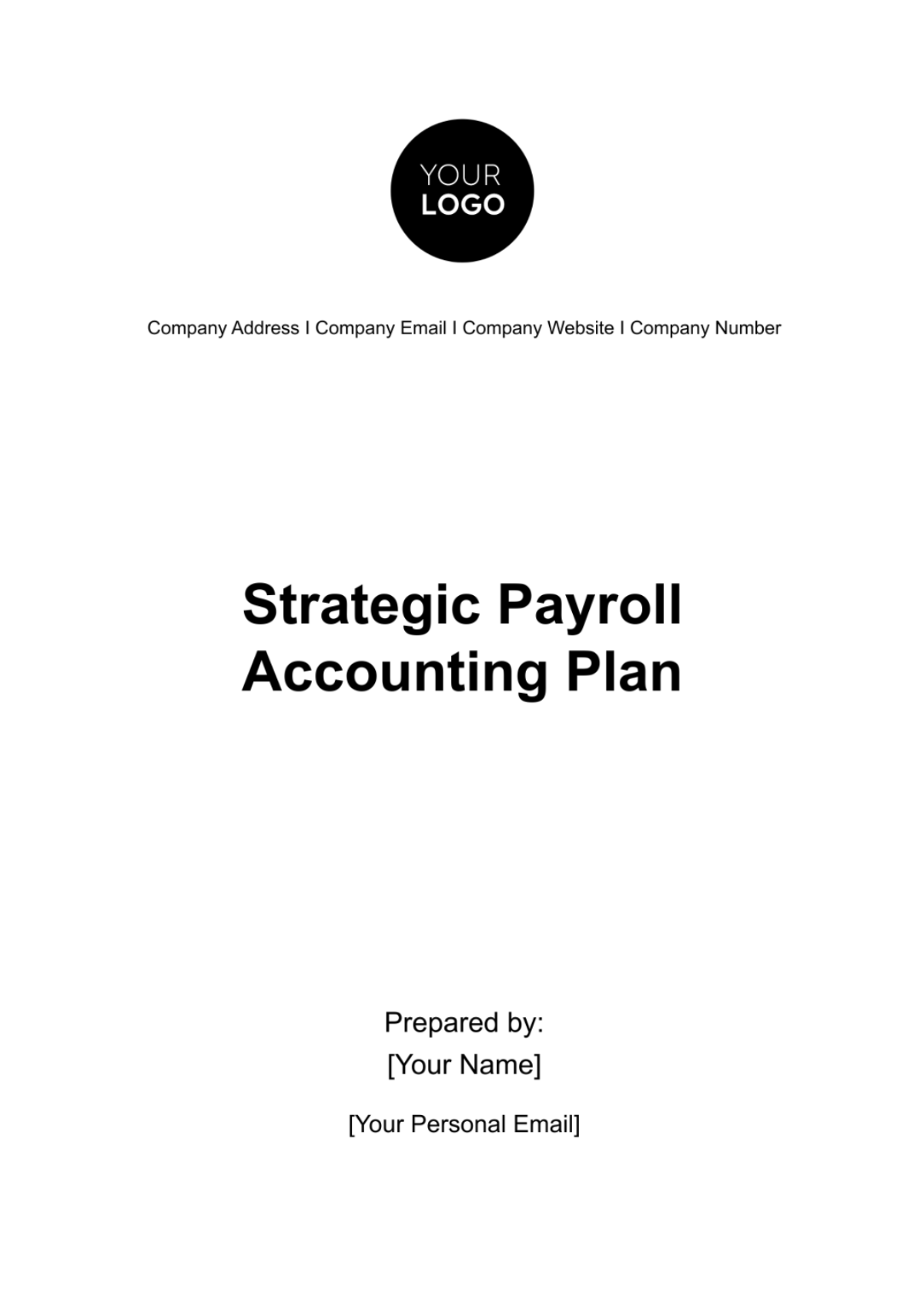
Overview of the Plan
This Strategic Payroll Accounting Plan outlines our approach to managing payroll operations efficiently and effectively. It is designed to ensure that our payroll system aligns with the organization's overall strategic objectives while maintaining compliance with all relevant laws and regulations. This plan serves as a roadmap for optimizing payroll processes, integrating advanced technologies, and enhancing employee satisfaction with payroll services.
Key Objectives and Goals
The primary objectives and goals of our payroll strategy include:
Compliance with Legal Standards: Ensuring all payroll activities adhere to federal, state, and local tax laws and employment regulations.
Operational Efficiency: Streamlining payroll processes to reduce costs and increase efficiency.
Employee Satisfaction: Enhancing the accuracy and timeliness of payroll processing to improve employee satisfaction.
Technology Integration: Leveraging advanced payroll technology for better data management and reporting capabilities.
Risk Management: Identifying and mitigating risks associated with payroll processing.
Description of the Organization
We are a dynamic organization with a diverse workforce, encompassing various roles ranging from entry-level positions to executive leadership. Our operations span multiple locations, each with its unique payroll requirements. As an organization committed to innovation and excellence, we prioritize efficient and accurate payroll processing to support our employees and organizational growth.
Payroll Department Structure and Roles
Our payroll department is structured to handle the complexities of our diverse workforce efficiently.
Role | Responsibilities |
Payroll Manager | Oversees all payroll operations and ensures compliance with legal standards. |
Payroll Accountants | Manage payroll processing, including calculations, deductions, and reporting. |
Compliance Officer | Ensures payroll practices adhere to legal and regulatory requirements. |
Payroll Analyst | Analyzes payroll data for trends, efficiencies, and areas for improvement. |
Systems Administrator | Manages payroll software and integration with other organizational systems. |
Employee Liaison | Serves as a point of contact for employee payroll inquiries and issues. |
Strategic Payroll Objectives
Our strategic objectives for payroll management focus on aligning payroll operations with our broader organizational goals while maintaining the highest standards of accuracy, efficiency, and compliance.
Streamline Payroll Processes: Enhance efficiency by automating and optimizing payroll procedures.
Maintain Compliance: Stay abreast of and comply with all applicable payroll-related laws and regulations.
Enhance Data Security: Implement robust security measures to protect sensitive payroll data.
Improve Employee Satisfaction: Ensure timely and accurate payroll disbursements to foster employee trust and satisfaction.
Cost Management: Effectively manage payroll expenses and seek opportunities to reduce costs without compromising on quality or compliance.
Overview of Relevant Payroll Laws and Regulations
Our payroll system adheres to a variety of U.S. laws and regulations to ensure legal compliance and ethical standards.
Fair Labor Standards Act (FLSA): Governs minimum wage, overtime pay, recordkeeping, and youth employment.
Federal Insurance Contributions Act (FICA): Addresses Social Security and Medicare contributions.
Federal Unemployment Tax Act (FUTA): Relates to the federal system of unemployment taxes.
Employee Retirement Income Security Act (ERISA): Sets standards for pension and health plans.
Family and Medical Leave Act (FMLA): Provides guidelines for employee leave for personal or family illness.
Compliance Goals and Strategies
Our compliance strategy involves a proactive approach to understanding and adhering to these laws and regulations. We conduct regular training sessions for payroll staff to ensure they are updated on the latest legal requirements. Our compliance officer routinely audits payroll processes to identify and rectify any potential compliance issues. Additionally, we stay informed about upcoming legislative changes and plan accordingly to ensure that our payroll processes remain compliant. This includes updating our payroll software and procedures as necessary to meet new legal standards.
Current Payroll System Description
Our current payroll system is an advanced, integrated software solution designed to manage all aspects of payroll processing efficiently. This system automates the calculation of wages, tax withholdings, and benefit deductions, ensuring accuracy and compliance with regulatory standards. It features real-time data processing capabilities, allowing for immediate updates and adjustments. Additionally, the system offers robust reporting tools, enabling us to generate detailed payroll reports for internal analysis and compliance purposes. The user interface is intuitive, facilitating easy navigation for payroll staff, and it integrates seamlessly with our timekeeping and HR management systems, ensuring a streamlined flow of information across departments.
Policies for Employee Classification
Accurate employee classification is crucial for compliance with labor laws and for effective payroll management.
Category | Definition | Payroll Implications |
Full-Time | Employees working a standard workweek, typically 40 hours. | Eligible for full benefits package, including health insurance, retirement plans, and paid leave. |
Part-Time | Employees working less than the standard workweek hours. | Pro-rated benefits based on hours worked; may have different wage rates. |
Temporary | Employees hired for a specific duration or project. | Typically not eligible for benefits; paid a pre-agreed hourly rate or salary for the duration of employment. |
Contractual | Independent contractors or freelancers hired for specific tasks. | Not eligible for company benefits; compensated as per contract terms, usually without tax withholdings. |
Salary Structures and Wage Determination
Our salary structures and wage determination policies are designed to be competitive, equitable, and compliant with market standards.
Employee Level | Salary Range | Basis |
Entry-Level | $35,000 - $50,000 | Based on industry standards, experience, and role requirements. |
Mid-Level | $50,000 - $75,000 | Determined by role complexity, experience, and performance outcomes. |
Senior-Level | $75,000 - $120,000 | Reflects leadership responsibilities, expertise, and contribution to organizational goals. |
Executive | $120,000 and above | Commensurate with strategic responsibilities, organizational impact, and market benchmarking. |
Overview of Employee Benefits Offered
Our organization offers a comprehensive range of employee benefits designed to support the well-being and financial security of our staff. These benefits are a key part of our commitment to fostering a positive work environment and attracting top talent.
Benefit Type | Description | Eligibility |
Health Insurance | Includes medical, dental, and vision coverage. | All full-time employees after 30 days of employment. |
Retirement Plan | 401(k) with employer match. | Available to all employees from the date of hire; employer match after 6 months. |
Life Insurance | Company-paid life insurance policy. | Full-time employees after 30 days. |
Paid Time Off (PTO) | Includes vacation, sick leave, and personal days. | All employees, accruing monthly based on tenure. |
Professional Development | Opportunities for skill development and career growth. | All employees, subject to approval and tenure requirements. |
Strategy for Benefits Administration
Our benefits administration strategy focuses on ensuring accessibility, clarity, and compliance. We utilize a centralized online platform where employees can manage their benefits, making selections and changes as needed. Regular communication and training sessions are held to educate employees about their benefits and any updates. We also conduct annual reviews of our benefits offerings to ensure they remain competitive and meet the evolving needs of our workforce.
Tax Withholding Strategies
Effective tax withholding is vital to ensure both compliance and employee satisfaction.
Regular Review of Tax Codes: Staying updated with changes in federal and state tax legislation.
Employee W-4 Form Analysis: Accurately applying withholding based on each employee's W-4 form.
Use of Payroll Software: Leveraging advanced payroll software for accurate tax calculations.
Employee Education: Informing employees about how tax withholdings work and the impact of their W-4 selections.
Reporting Procedures and Compliance
Adhering to reporting standards and maintaining compliance is crucial in our payroll operations.
Timely Tax Filing: Ensuring all payroll-related taxes are filed accurately and on time with the IRS and state agencies.
W-2 and 1099 Issuance: Issuing W-2 forms to employees and 1099 forms to contractors by the required deadlines.
Record Keeping: Maintaining detailed records for all payroll transactions for the legally required time frame.
Regular Audits: Conducting internal audits to ensure ongoing compliance and to prepare for potential external audits.
Staying Informed: Keeping abreast of changes in payroll-related laws and regulations to ensure continuous compliance.
Timekeeping Systems and Procedures
Effective timekeeping is critical for accurate payroll processing. We utilize a digital timekeeping system that allows employees to clock in and out electronically, ensuring precise recording of work hours, overtime, and leave.
Clock-In/Out Procedure: Employees must clock in at the start and clock out at the end of their shift using the designated timekeeping system.
Regular Review: Supervisors are responsible for regularly reviewing and verifying time records for accuracy.
Overtime Approval: Overtime work must be pre-approved and recorded accurately in the system.
Leave and Absences Recording: All leave and absences should be logged in the system to ensure proper tracking.
Attendance Policy and Management
Regular attendance is vital for operational efficiency. Our attendance policy is designed to ensure fairness and consistency while accommodating the occasional need for flexibility.
Employees are expected to adhere to their scheduled work hours.
Unauthorized absences or habitual tardiness may result in disciplinary action.
Absences due to illness or emergencies should be reported to the supervisor as soon as possible.
The use of personal and sick leave must be in accordance with company policy and recorded accurately in the timekeeping system.
Payroll Cycle and Processing Procedures
Our payroll cycle is structured to ensure timely and accurate compensation to our employees.
Gather time records and other payroll-related data for each pay period.
Compute gross wages, including regular hours, overtime, and bonuses.
Apply necessary deductions such as taxes, benefits, and other withholdings.
Review the payroll for accuracy before final processing.
Obtain necessary approvals from management.
Process the payroll using our payroll software system.
Payment Methods and Disbursement Strategies
We offer various payment methods to meet the diverse needs of our workforce.
Payment Method | Description |
Direct Deposit | Funds are electronically transferred to the employee's bank account. |
Paycheck | Physical checks are issued and can be collected or mailed. |
Payroll Cards | For employees without bank accounts, wages are loaded onto a payroll card. |
Procedures for Identifying and Correcting Errors
Accuracy in payroll processing is critical, and prompt correction of errors is a key part of maintaining trust and compliance.
Conduct regular audits of payroll records to identify discrepancies.
Encourage employees to review their pay statements and report any errors.
Investigate and analyze reported errors to understand their root cause.
Make necessary corrections immediately upon verification of errors.
Inform affected employees of corrections and document all changes for audit purposes.
Reconciliation Processes
Reconciliation is a vital process to ensure the accuracy and integrity of payroll records.
Regularly compare payroll records with bank statements & timekeeping data.
Obtain necessary approvals for any adjustments to payroll records.
Make amendments promptly to avoid cascading errors.
Document and report discrepancies as part of the reconciliation process.
Training Programs
Investing in the training and development of our payroll staff is crucial for maintaining a high level of service and compliance.
Program Name | Duration | Description |
Payroll Compliance Certification | 1 Week | Comprehensive training on payroll laws and regulations. |
Advanced Payroll Software Training | 3 Days | In-depth training on advanced features of our payroll software. |
Data Security and Privacy Workshop | 2 Days | Training focused on the protection of sensitive payroll data. |
Leadership and Management Skills | 1 Week | For senior payroll staff to enhance leadership and management capabilities. |
Emergency and Contingency Procedures
In the event of an emergency or unexpected disruption, it is essential to have a plan to ensure the continuity of payroll operations.
Business Continuity Plan: Maintain a detailed business continuity plan specifically for payroll operations.
Remote Access: Ensure payroll staff can access systems remotely if necessary.
Backup Data: Regularly backup payroll data to secure cloud storage.
Communication Plan: Establish a clear communication protocol to keep employees informed about the status of payroll operations.
Training on Contingency Measures: Regularly train payroll staff on emergency procedures and contingency plans.
Key Performance Indicators for Payroll
To effectively monitor and evaluate our payroll operations, we have established Key Performance Indicators (KPIs). These metrics help us track efficiency, accuracy, and compliance in our payroll processes.
KPI | Target | Description |
Payroll Processing Accuracy Rate | 99% | Percentage of payroll processed without errors. |
Payroll Compliance Rate | 100% | Adherence to federal and state payroll laws. |
Employee Satisfaction with Payroll | 90% | Based on employee surveys regarding payroll satisfaction. |
Cost per Payroll Process | Reduce by 5% annually | Efficiency in payroll processing costs. |
Time to Resolve Payroll Discrepancies | Within 48 hours | Promptness in addressing and resolving payroll issues. |
Budget and Financial Considerations
Effective budgeting and financial management are crucial for the smooth operation of our payroll department.
Item | Amount | Description |
Payroll Software Subscription | $20,000 | Annual cost for payroll software licensing. |
Employee Training and Development | $15,000 | Budget for annual training programs for payroll staff. |
Payroll Staff Salaries | $200,000 | Total annual salaries for payroll department employees. |
Compliance Audit Expenses | $10,000 | Estimated cost for external compliance audits. |
Communication Plans
Clear and consistent communication is essential for the effective functioning of our payroll operations.
Communication Type | Frequency | Description |
Payroll Process Updates | As needed | Notify employees of any changes in payroll processes. |
Employee Payroll Training | Annually | Annual training sessions on payroll-related matters. |
Compliance Updates | Quarterly | Regular updates on changes in payroll laws and regulations. |
Emergency Communication | As needed | Communication protocol during emergencies affecting payroll. |
Phased Implementation Plan
To ensure a smooth transition and effective integration of new strategies in our payroll system, we have devised a phased implementation plan. This structured approach allows us to monitor progress, make necessary adjustments, and manage resources efficiently.
Phase | Duration | Key Activities |
Planning and Assessment | 1 Month | Analyze current payroll processes and identify areas for improvement. Prepare a detailed implementation roadmap. |
System Upgrades | 2 Months | Implement software upgrades and integrate new technologies. |
Policy Revision | 1 Month | Update payroll policies and procedures in line with new systems and regulations. |
Staff Training | 1 Month | Conduct comprehensive training sessions for payroll staff on new processes and software. |
Pilot Testing | 1 Month | Test new payroll processes in a controlled environment to ensure efficiency and accuracy. |
Full Implementation | 2 Months | Roll out the updated payroll system across the entire organization. |
Review and Adjustment | Ongoing | Regularly review the system for performance and make necessary adjustments. |
Regular Review and Update Processes
Continuous improvement is a key aspect of our strategic payroll plan. Regular reviews and updates ensure that our payroll system remains effective, efficient, and compliant with evolving regulations and organizational needs.
Quarterly Reviews: Conduct quarterly reviews of the payroll system to assess its performance against set KPIs.
Feedback Mechanism: Implement a feedback mechanism for employees and payroll staff to provide insights into the system's effectiveness and areas for improvement.
Regulatory Compliance Check: Regularly review changes in payroll-related laws and regulations to ensure ongoing compliance.
Technology Updates: Keep abreast of technological advancements and update our payroll software and systems as needed.
Policy Updates: Revise payroll policies and procedures in response to feedback, performance reviews, and regulatory changes.
Annual Training: Provide annual training sessions for payroll staff to keep them updated on best practices, new software features, and regulatory changes.
- 100% Customizable, free editor
- Access 1 Million+ Templates, photo’s & graphics
- Download or share as a template
- Click and replace photos, graphics, text, backgrounds
- Resize, crop, AI write & more
- Access advanced editor
Explore the Strategic Payroll Accounting Plan Template from Template.net, a cornerstone for crafting effective payroll strategies. This template stands out as both editable and customizable, tailored to align with your organization's goals. Modify it seamlessly using our AI Editor tool, ensuring your payroll plan is strategic, comprehensive, and efficient. Opt for Template.net for advanced payroll accounting planning.
You may also like
- Finance Plan
- Construction Plan
- Sales Plan
- Development Plan
- Career Plan
- Budget Plan
- HR Plan
- Education Plan
- Transition Plan
- Work Plan
- Training Plan
- Communication Plan
- Operation Plan
- Health And Safety Plan
- Strategy Plan
- Professional Development Plan
- Advertising Plan
- Risk Management Plan
- Restaurant Plan
- School Plan
- Nursing Home Patient Care Plan
- Nursing Care Plan
- Plan Event
- Startup Plan
- Social Media Plan
- Staffing Plan
- Annual Plan
- Content Plan
- Payment Plan
- Implementation Plan
- Hotel Plan
- Workout Plan
- Accounting Plan
- Campaign Plan
- Essay Plan
- 30 60 90 Day Plan
- Research Plan
- Recruitment Plan
- 90 Day Plan
- Quarterly Plan
- Emergency Plan
- 5 Year Plan
- Gym Plan
- Personal Plan
- IT and Software Plan
- Treatment Plan
- Real Estate Plan
- Law Firm Plan
- Healthcare Plan
- Improvement Plan
- Media Plan
- 5 Year Business Plan
- Learning Plan
- Marketing Campaign Plan
- Travel Agency Plan
- Cleaning Services Plan
- Interior Design Plan
- Performance Plan
- PR Plan
- Birth Plan
- Life Plan
- SEO Plan
- Disaster Recovery Plan
- Continuity Plan
- Launch Plan
- Legal Plan
- Behavior Plan
- Performance Improvement Plan
- Salon Plan
- Security Plan
- Security Management Plan
- Employee Development Plan
- Quality Plan
- Service Improvement Plan
- Growth Plan
- Incident Response Plan
- Basketball Plan
- Emergency Action Plan
- Product Launch Plan
- Spa Plan
- Employee Training Plan
- Data Analysis Plan
- Employee Action Plan
- Territory Plan
- Audit Plan
- Classroom Plan
- Activity Plan
- Parenting Plan
- Care Plan
- Project Execution Plan
- Exercise Plan
- Internship Plan
- Software Development Plan
- Continuous Improvement Plan
- Leave Plan
- 90 Day Sales Plan
- Advertising Agency Plan
- Employee Transition Plan
- Smart Action Plan
- Workplace Safety Plan
- Behavior Change Plan
- Contingency Plan
- Continuity of Operations Plan
- Health Plan
- Quality Control Plan
- Self Plan
- Sports Development Plan
- Change Management Plan
- Ecommerce Plan
- Personal Financial Plan
- Process Improvement Plan
- 30-60-90 Day Sales Plan
- Crisis Management Plan
- Engagement Plan
- Execution Plan
- Pandemic Plan
- Quality Assurance Plan
- Service Continuity Plan
- Agile Project Plan
- Fundraising Plan
- Job Transition Plan
- Asset Maintenance Plan
- Maintenance Plan
- Software Test Plan
- Staff Training and Development Plan
- 3 Year Plan
- Brand Activation Plan
- Release Plan
- Resource Plan
- Risk Mitigation Plan
- Teacher Plan
- 30 60 90 Day Plan for New Manager
- Food Safety Plan
- Food Truck Plan
- Hiring Plan
- Quality Management Plan
- Wellness Plan
- Behavior Intervention Plan
- Bonus Plan
- Investment Plan
- Maternity Leave Plan
- Pandemic Response Plan
- Succession Planning
- Coaching Plan
- Configuration Management Plan
- Remote Work Plan
- Self Care Plan
- Teaching Plan
- 100-Day Plan
- HACCP Plan
- Student Plan
- Sustainability Plan
- 30 60 90 Day Plan for Interview
- Access Plan
- Site Specific Safety Plan
